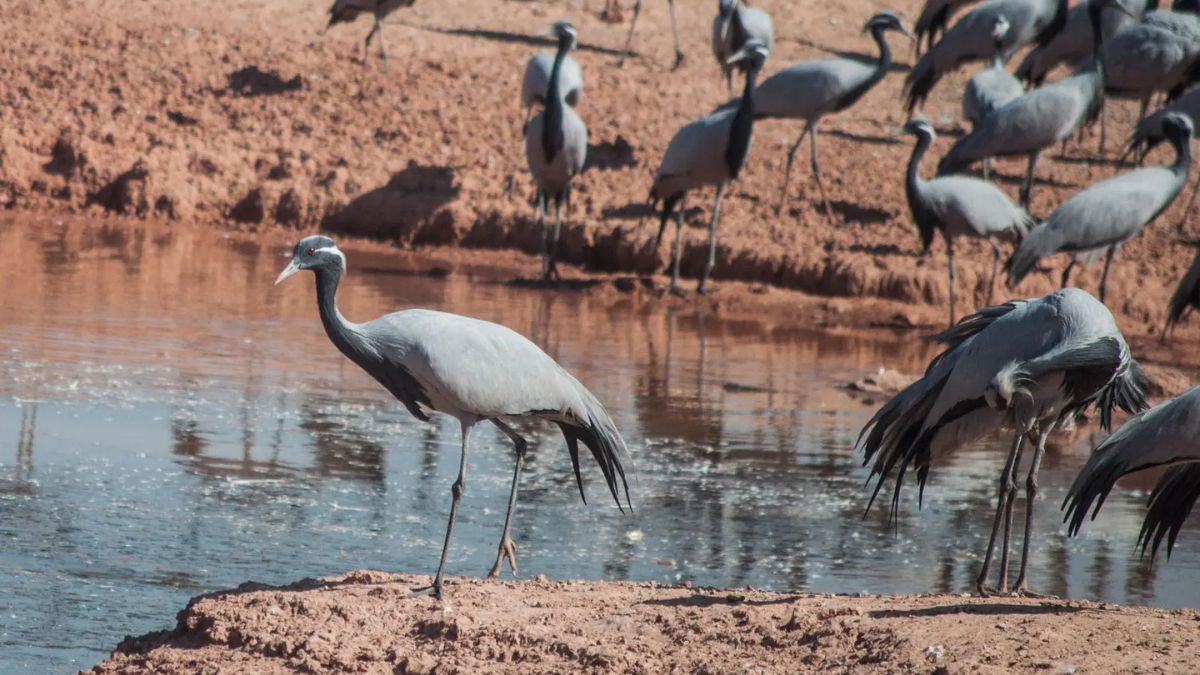Crane hunting in Pakistan is a deeply rooted tribal practice that has evolved under growing legal restrictions and wildlife conservation efforts. Migratory cranes—especially demoiselle and common cranes—have been hunted for centuries across Pakistan’s tribal belts, particularly in areas like South Waziristan, Lakki Marwat, Zhob, and Bannu. Today, these hunting traditions face increasing scrutiny under modern wildlife protection laws.
Tribal Practices and Traditional Hunting Techniques
Historically, tribal communities used a method called “soai”—a long rope with stones—to entangle cranes when they were lured by decoy birds. These live decoys, often trained from previous hunts, were crucial for attracting wild flocks. After being grounded, cranes were either caged, tamed, or sold.
In certain regions, crane hunting is viewed as a symbol of status. A pair of trained cranes can be sold for up to PKR 700,000, while wild birds typically sell for PKR 3,000–4,000 each.
Read More: How Trophy Hunting Bodes Well for Conservation?
Cultural and Economic Significance
Cranes hold symbolic value among tribes in South Waziristan and surrounding areas. They appear in local poetry, songs, and springtime folklore. Beyond cultural significance, the practice also contributes to local income, making regulation complex.
Ecological Impact
Crane populations in Pakistan are reportedly declining. Key threats include:
- Overhunting during migratory seasons.
- Habitat loss due to land development.
- Exposure to pesticides along agricultural belts.
- Disruption during migration, especially in conflict zones.
Militancy in areas like North Waziristan and parts of Balochistan has also made conservation patrols difficult.
Legal Framework and Government Action
Pakistan’s provinces have implemented varying laws to regulate or ban crane hunting.
| Province | Legal Status | Remarks |
|---|---|---|
| Khyber Pakhtunkhwa (KP) | Regulated | Shotgun hunting banned; licensed traditional trapping allowed |
| Punjab | Active Crackdowns | Hideouts near Indus destroyed in 2025 |
| Balochistan | Crackdowns Ordered | CM ordered dismantling of illegal camps in Zhob (2023) |
| Lakki Marwat (KP) | Full Ban | Hunting banned since 2014 |
Some provinces like KP introduced caps (10 pairs per camp) and licensing fees (PKR 400 per bird; PKR 5,000 per camp).
Read More: Birds of Pakistan: A Colorful Symphony of Nature
Conservation Efforts and Initiatives
Efforts are being made to preserve crane populations:
- WWF-Pakistan has urged stronger enforcement and revived migratory bird surveys.
- Crane Conservation Center in Lakki Marwat, established in 2007, plays a critical role. It houses aviaries, breeding programs, and educational outreach.
Despite these initiatives, enforcement remains inconsistent, especially in remote tribal areas.
Current Situation and Outlook
Crane hunting in Pakistan remains a highly sensitive issue balancing tribal heritage with environmental sustainability. While government efforts are increasing, on-ground implementation remains weak in certain districts due to political and logistical constraints. Conservationists recommend:
- Strengthening wildlife law enforcement.
- Promoting alternative livelihoods like eco-tourism.
- Expanding community education and conservation incentives.
Conclusion
Crane hunting in Pakistan reflects a complex intersection of cultural tradition, economic survival, and environmental concern. While the government has taken steps through bans, enforcement actions, and awareness campaigns, sustainable change requires a multi-tiered approach. Stronger community engagement, legal consistency across provinces, and targeted conservation programs are essential to protect these endangered migratory birds. Stay updated with: Bloom Pakistan
Read More: Spanish Citizen Pays $42,500 to Hunt Markhor in Chitral: A Record Price









